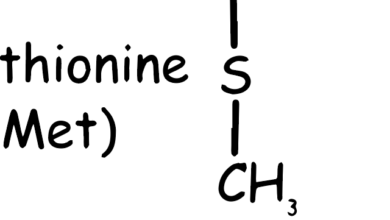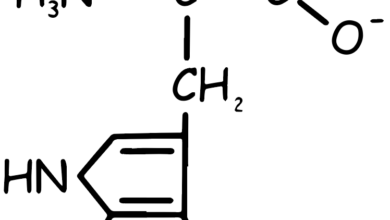Stinging Nettle tea

Urtica dioica L., commonly known as stinging nettle, is a perennial herbaceous plant belonging to the Urticaceae family. It thrives in the temperate regions of Europe, Asia, North Africa, and North America, up to altitudes of 1800 meters. The plant is widely recognized around the world and is known by various names, including nettle leaf and common nettle, along with several regional names. Stinging nettle typically forms dense thickets, especially in disturbed soil areas.
This plant is categorized as a phytoalimurgic vegetable, a term derived from the Greek word ‘phytόn’ meaning plant, and the Latin phrase ‘alimenta urgentia,’ which refers to any food consumed out of necessity. Historically, these wild edible species were utilized during food shortages. In recent years, the interest in phytoalimurgic plants has grown due to their unique chemical composition and their beneficial impact on human health.
For centuries, nettle plants have been utilized globally, from Roman soldiers to South American tribes, in a practice known as urtication. This involved intentionally whipping the body with fresh nettles to alleviate pain and other health issues.
In modern times, nettles are often avoided due to their stinging nature. However, historically, they were highly valued for their multiple uses in food, fiber, cosmetics, medicine, and agriculture. Recently, there’s been a renewed interest in these diverse applications.
Nettle leaves are highly nutritious and can be preserved for winter use through drying, which renders them safe to handle and eat. They can also be made harmless by boiling. It’s recommended to consume the young shoots and leaves of the plant, as older parts, particularly during and after flowering and fruiting, may contain increased levels of cystoliths, which can potentially irritate the kidneys.
Complications of Stinging Nettle
Certain individuals might experience a serious allergic reaction to a nettle sting, potentially leading to life-threatening complications that demand immediate medical intervention. The signs of such a severe allergic response can include:
- Difficulty in breathing
- Challenges with swallowing
- Audible wheezing
- Sensations of dizziness or light-headedness
- Nausea
- Episodes of vomiting
- An accelerated heartbeat
- A feeling of tightness in the chest area
- Quick and pronounced swelling near the face, mouth, throat, or under the skin
- Impaired coordination
- Shaking or trembling
- Weakness in muscles
- Abdominal pain
Stinging nettle holds potential as a significant source of biomass for various natural products, particularly in sectors like food/feed, medicine, cosmetics, and fiber. The plant’s numerous active compounds lend scientific credibility to its traditional uses. Overcoming technical challenges in areas such as mechanized harvesting, determining optimal nutrient and water needs for cultivation, and improving post-processing methods (like extraction, spinning, and weaving for fiber) could position stinging nettle as a valuable and widespread biomass source, enhancing the earnings of rural communities.
Health Benefits of Stinging Nettle
1. Nutrient Profile and Antioxidant Properties: Stinging nettle is a powerhouse of nutrients and antioxidants. It’s rich in vitamins A, C, K, and several B vitamins, along with minerals like calcium, iron, magnesium, phosphorus, potassium, and sodium. The plant also contains various fats, essential amino acids, polyphenols (like kaempferol, quercetin, caffeic acid), and pigments including beta-carotene and lutein. These nutrients act as antioxidants, which protect cells against damage by free radicals, potentially slowing aging and reducing the risk of cancer and other diseases.
2. Anti-Inflammatory Effects: Stinging nettle has been found to possess compounds that reduce inflammation, making it potentially useful in treating conditions like arthritis. Both animal and human studies have shown that stinging nettle can significantly reduce pain and inflammation. For example, a study with a stinging nettle cream showed notable pain reduction in arthritis patients. However, more extensive human research is needed to fully endorse stinging nettle as an anti-inflammatory treatment.
3. Potential Treatment for Enlarged Prostate: Stinging nettle may be effective in treating symptoms of benign prostatic hyperplasia (BPH), a common condition in older men involving prostate enlargement. Research indicates that stinging nettle could help reduce prostate size by preventing the conversion of testosterone into a more potent form. Studies have shown that stinging nettle extracts can alleviate urination problems associated with BPH without side effects, but its effectiveness compared to conventional treatments remains unclear.
4. Hay Fever Management: Stinging nettle might be a beneficial natural remedy for hay fever, as it can inhibit the inflammation that triggers seasonal allergies. This includes blocking histamine receptors and stopping the release of allergy-inducing chemicals. However, its effectiveness is still debated, with some studies suggesting it might be only slightly better than a placebo. More long-term human studies are needed.
5. Blood Pressure Reduction: Traditionally used to treat high blood pressure, stinging nettle may lower blood pressure by stimulating nitric oxide production, which relaxes blood vessels, and acting as a calcium channel blocker to reduce heart contraction force. Animal studies support these effects, but more human research is required to confirm them.
6. Blood Sugar Control: Stinging nettle has shown potential in lowering blood sugar levels, with compounds that may mimic insulin effects. In a study, stinging nettle extract significantly lowered blood sugar levels in participants. However, more extensive human research is necessary to fully understand and validate these effects.
Summary: Stinging nettle is a nutrient-rich plant with a range of potential health benefits. It offers antioxidant properties, may reduce inflammation and arthritis pain, could treat enlarged prostate symptoms, and might help manage hay fever and lower blood pressure. Additionally, it shows promise in aiding blood sugar control. Despite these potential benefits, more comprehensive human studies are needed to fully substantiate these claims and determine the optimal use of stinging nettle in these areas.



